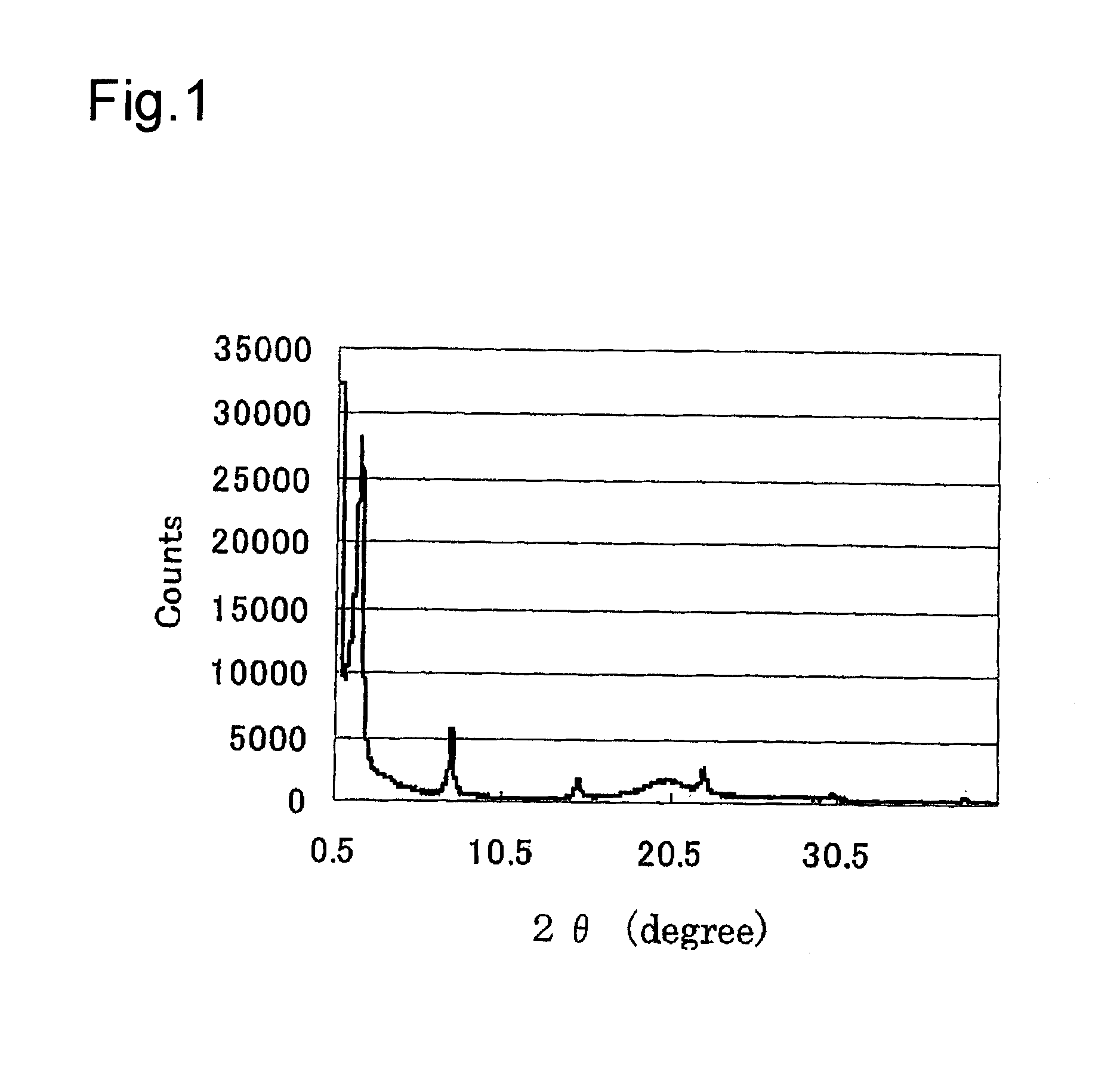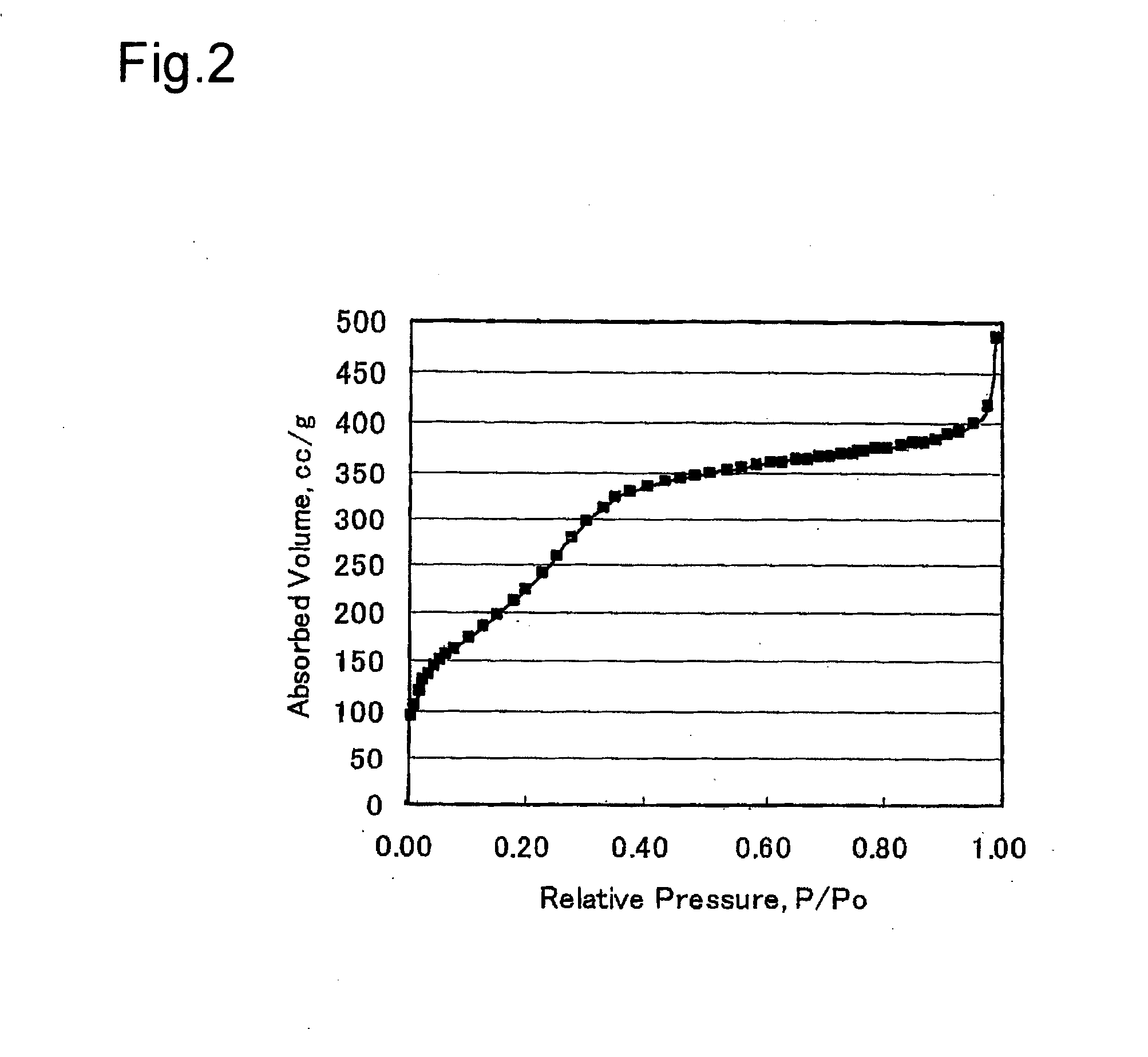Light energy conversion material
a technology of light energy and conversion materials, which is applied in the field of light energy conversion materials, can solve the problems of insufficient amount of electron donor introduced in the pore, insufficient chemical energy conversion reaction, and inability to achieve the effect of increasing and improving the efficiency of light energy conversion
- Summary
- Abstract
- Description
- Claims
- Application Information
AI Technical Summary
Benefits of technology
Problems solved by technology
Method used
Image
Examples
examples
[0109]The present invention will more specifically be described below based on examples and comparative example. However, the present invention is not limited to the following examples. (Synthesis Example 1: Synthesis of Crystalline Powders of Silica Porous Material Modified by Biphenyl Group (BiPh-HMM))
[0110]First, trimethyloctadecylammonium chloride (surfactant: 1.83 g, 5.26 mol) was dissolved in a mixed liquid of water (100 ml) and a 6M aqueous solution of sodium hydroxide (10 g) to obtain a mixed solution. Then, 4,4′-bis(triethoxysilyl)biphenyl (2.00 g, 4.18 mol) was added dropwise into the obtained mixed solution while stirring at room temperature. Thereafter, the irradiation with ultrasonic waves for 20 minutes and the stirring were repeated to the mixed solution. Subsequently, the solution was stirred for 24 hours at room temperature to obtain a reaction solution. After that, the reaction solution was left at rest at a temperature condition of 98° C. for 48 hours. Then, the r...
example 1
[0119]First, the BiPh-HMM crystalline powders (0.4 g, 1.56 mmol) obtained in Synthesis example 1 was added to a solution prepared by dissolving the 4,4′-bipyridine derivative (100 mg, 0.136 mmol) obtained in Synthesis example 3 in water-containing acetonitrile (8 ml) . Then, the mixture was treated with ultrasonic waves at room temperature for 1 minute. Thereafter, the mixture was stirred while heating at a temperature condition of 70° C. for 2 hours to form a precipitate. Subsequently, the precipitate obtained in the above manner was filtered, washed with water, and further washed with ethanol. Thereafter, the precipitate was dried in vacuum to obtain 0.462 g of crystalline powders of BiPh-HMM modified by viologen (SiVSi(I)-BiPh-HMM).
[0120]The SiVSi(I)-BiPh-HMM obtained in the above manner was measured by the X-ray diffraction. FIG. 4 shows the XRD pattern of the SiVSi(I)-BiPh-HMM. From the result shown in FIG. 4, a regularly arranged mesoporous structure (d=45.04 Å) was recognized...
example 2
[0123]The SiVSi(I)-BiPh-HMM obtained in Example 1 (50 mg) was suspended in a saturated NH4PF6 aqueous solution (1 ml) to produce a suspended liquid. The produced suspended liquid was stirred at room temperature for one day. Thereafter, the suspended solid in the suspended liquid was filtered, washed with water, further washed with ethanol, and dried in vacuum to ion-exchange the counter anion of the viologen from iodine ions (I−) to hexafluorophosphate ion (PF6−). Then, to completely carry out such an ion-exchange, the same operation was repeated twice to obtain 32.6 mg of crystalline powders of BiPh-HMM modified by viologen (SiVSi(PF6)-BiPh-HMM).
PUM
| Property | Measurement | Unit |
|---|---|---|
| pore diameter | aaaaa | aaaaa |
| thickness | aaaaa | aaaaa |
| pH | aaaaa | aaaaa |
Abstract
Description
Claims
Application Information
 Login to View More
Login to View More - R&D
- Intellectual Property
- Life Sciences
- Materials
- Tech Scout
- Unparalleled Data Quality
- Higher Quality Content
- 60% Fewer Hallucinations
Browse by: Latest US Patents, China's latest patents, Technical Efficacy Thesaurus, Application Domain, Technology Topic, Popular Technical Reports.
© 2025 PatSnap. All rights reserved.Legal|Privacy policy|Modern Slavery Act Transparency Statement|Sitemap|About US| Contact US: help@patsnap.com



